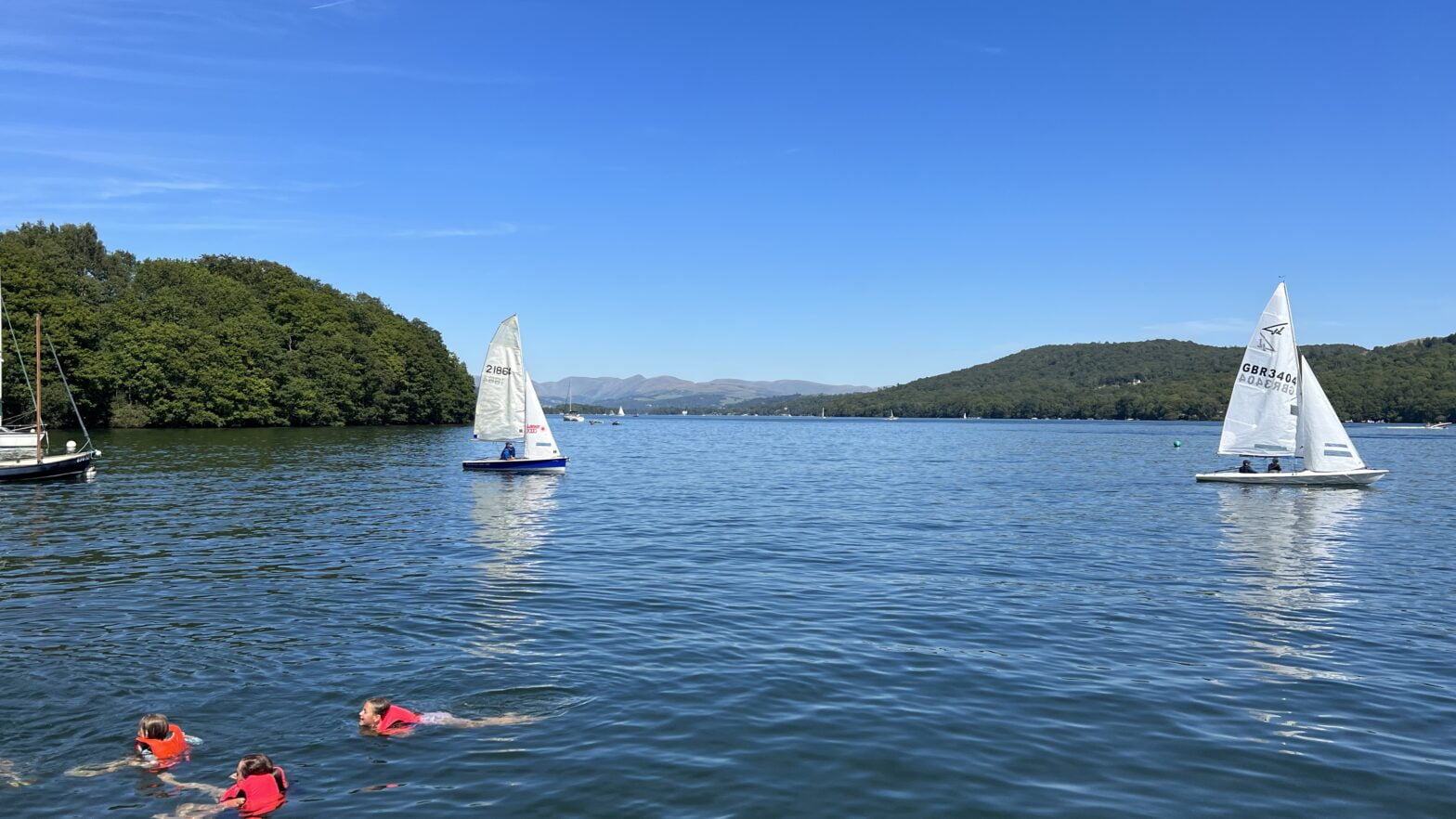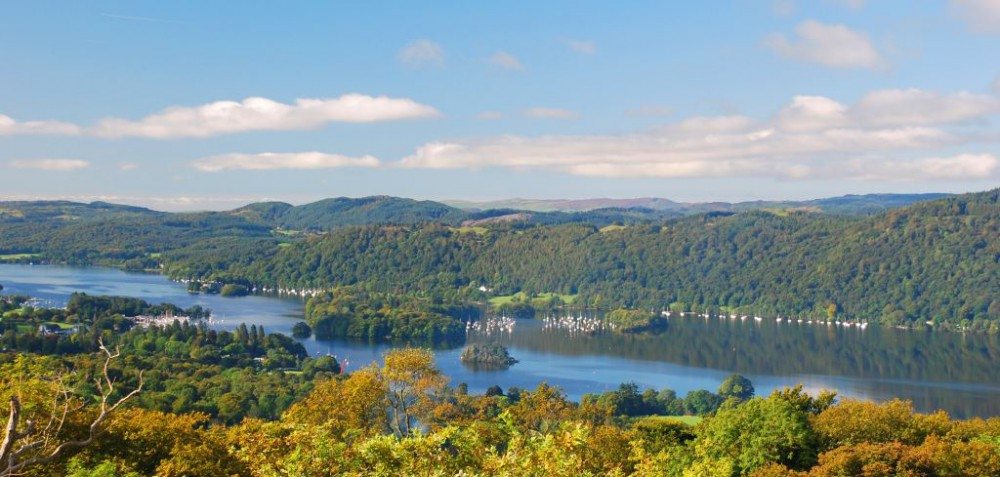Lake Windermere

Windermere is England’s largest lake at over 10 miles long, over a mile wide in the widest part and 219 feet deep.
The lake is a ribbon lake formed in a glacial trough after the retreat of ice in the ice age. It has been one of the country’s most popular places for holidays since the arrival of the railway’s in 1847.
The lake has several villages dotted along it. At the southern end of the lake is Lakeside and Newby Bridge where you can find the Lakes Aquarium, the Haverthwaite Steam Railway and the terminus for the Windermere Lake Cruises and ‘Steamers’.
At the mid way point of the lake is the very popular village of Bowness-on-Windermere with the village of Windermere and it’s railway station a mile inland.
Bowness has a good Tourist Information Centre, shops, restaurants, cafes, pubs and lots more. Down by the lake you can soak up the bustle of the steamers arriving and departing at Bowness Bay pier and you can also hire small motor boats and rowing boats.
Ambleside and Waterhead lie at the northern tip of the lake. Ambleside is a bustling town of outdoor equipment shops, bookshops, gift shops, cafes and restaurants and a cinema. Nestled in the valley between several high fells, it’s the start and end point for many walks.
The Windermere Cruise boats and Steamers call at Waterhead where you can also hire small motor boats and rowing boats.
Lake Windermere has many activities on and around the lake, as you’d imagine with it being England’s longest lake. If you don’t want to participate in these activities you can sit on 1 of the many hillsides and watch the yachts and boats at your leisure. Speed boats are now banned from the lake to preserve it’s tranquility.
Hers is my photo taken from the top of Orrest Head, just a 30 minute minute walk uphill from Windermere train station.

